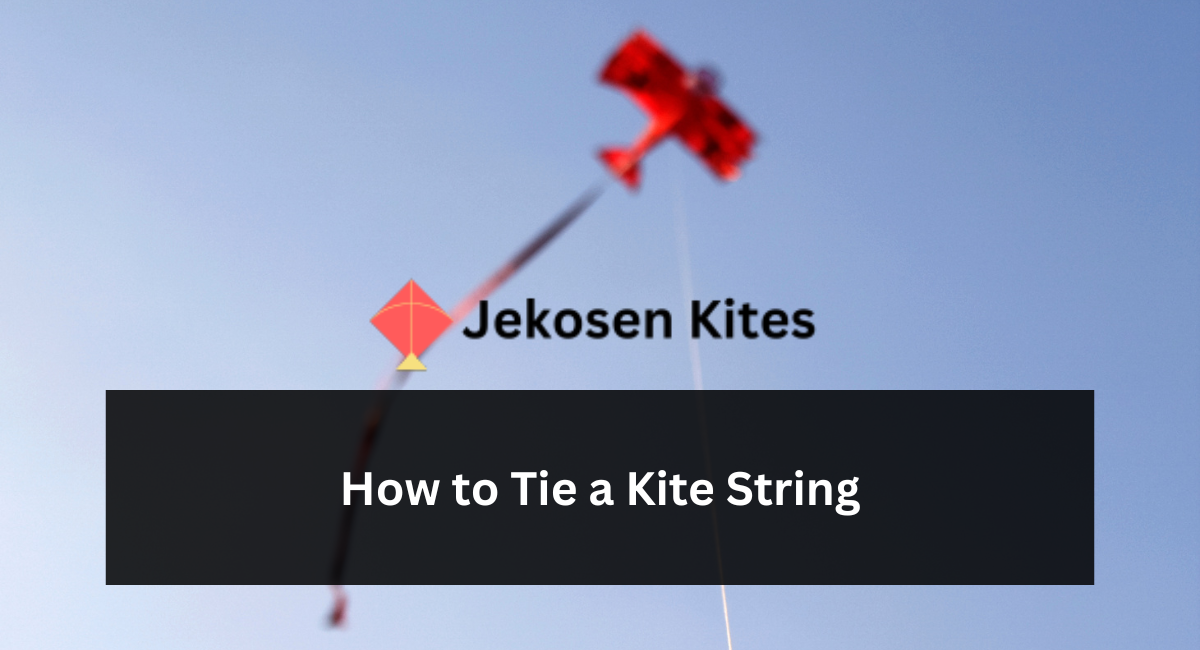Tying a kite string, also known as attaching the line to your kite, is a fundamental skill every kite flyer needs to master. It might seem like a small detail, but the way you tie your kite string can significantly impact the kite’s flying abilities.
In simple language, this guide will walk you through the process step-by-step, ensuring that your kite flying experience is smooth and enjoyable.
Understanding Kite Parts
Before we dive into the tying process, it’s essential to familiarize yourself with the basic parts of a kite and the kite string:
- Kite Frame: This is the structure of the kite, often made of lightweight materials like bamboo, plastic, or fiberglass rods.
- Sail: The material (usually fabric or paper) stretched over the frame, catching the wind to lift the kite.
- Bridle: A key component, the bridle is a set of strings attached to the frame, helping to balance and control the kite in the air.
- Kite String (Line): The long string that you hold onto, which connects you to the kite.
Choosing the Right Kite String
Before tying, ensure you have the right kind of string for your kite. The string should be strong enough to handle the pull of the kite without breaking, yet light enough not to weigh it down.
Nylon and polyester are popular choices because they are durable and resistant to stretching.
Step-by-Step Guide to Tying Your Kite String
Step 1: Unroll Your String
Start by unrolling your kite string from its spool or winder. It’s important to do this carefully to avoid any tangles or knots that could weaken the string.
Step 2: Find the Kite’s Bridle
Locate the bridle points on your kite. These are usually found at the front of the kite, where the material of the sail meets the frame.
The bridle may have one or several attachment points, depending on the kite’s design.
Step 3: Create a Loop in the Kite String
Take the end of your kite string and make a small loop by folding about 5 to 6 inches of the string back onto itself.
Tie this into a simple overhand knot, creating a secure loop at the end of your string.
Step 4: Attach the String to the Bridle
- If your kite has a single bridle point, you can directly attach the loop you just made to this point.
- For kites with multiple bridle points, find the main bridle line that connects all these points together, which usually ends in a ring or a loop.
Step 5: Use the Lark’s Head Knot
The Lark’s Head Knot is a simple and effective knot for attaching your kite string to the bridle. To tie it:
- Push the loop you made in the string through the bridle loop or ring.
- Open up the loop you just pushed through and pull the rest of your string and winder/spool through this loop.
- Pull tight to secure the knot. The beauty of the Lark’s Head Knot is that the more the kite pulls, the tighter the knot gets, ensuring a secure attachment.
Step 6: Check the Security of Your Knot
Give the string a gentle pull to ensure the knot is tight and secure. A well-tied knot will not slip or move, giving you confidence that your kite won’t get lost in the sky.
Step 7: Prepare for Takeoff
With your kite string securely attached, you’re almost ready to fly. Unroll a bit more string and prepare to launch your kite.
Remember, the length of string you let out will depend on the wind conditions and the amount of space you have.
Tips for a Successful Kite Flying Experience
- Inspect Your Kite and String: Before each flying session, check your kite and string for any damage or wear that could affect performance.
- Choose the Right Wind Conditions: Kites need the right amount of wind to fly — not too little and not too much. A light to moderate breeze (about 5 to 25 mph) is ideal for most kites.
- Practice Patience: Learning to fly a kite takes time and patience. Don’t be discouraged by initial failures; each attempt teaches you more about handling your kite.
- Safety First: Always fly your kite in open spaces away from trees, power lines, and other obstacles. Keep a safe distance from other people to avoid accidents.
Conclusion
Tying a kite string is a simple yet crucial skill in the art of kite flying. By following these steps and practicing a few times, you’ll become proficient at attaching your string, ensuring your kite flies high and steady.
Remember, kite flying is not just about the technicalities of knots and wind conditions; it’s about the joy of watching your kite soar, the peace of being outdoors, and the fun of mastering the sky.
So grab your kite, tie that string, and embrace the adventure that awaits in the open air.



